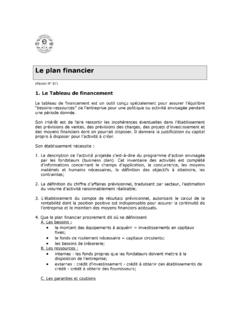Transcription of Major Characteristics of U.S. Health Care Delivery
1 Chapter 1 Major Characteristics of Care DeliveryINTRODUCTIONThe United States has a unique system of Health care Delivery . For thepurposes of this discussion, Health care Delivery and Health servicesdelivery can have slightly different meanings, but in a broad sense, bothterms refer to the Major components of the system and the processes thatenable people to receive Health care. In a more restricted sense, the termsrefer to the act of providing Health care services to patients. The reader canidentify which meaning is intended by paying attention to contrast to the United States, most developed countries have nationalhealth insurance programs that are run by the government and financedthrough general taxes. Almost all of the citizens in such countries are enti-tled to receive Health care services that include routine and basic healthcare.
2 These countries have what is commonly referred to as universalaccess. All American citizens, on the other hand, are not entitled to :Shi 2/9/09 12:54 PM Page 1 Jones and Bartlett Publishers, LLC. NOT FOR SALE OR 1 Major Characteristics of Health Care Deliveryand basic Health care services. Although the Health care Delivery sys-tem has evolved in response to concerns about cost, access, and quality, thesystem has been unable to provide universally a basic package of healthcare at an affordable cost. One barrier to universal coverage is the unneces-sary fragmentation of the Delivery system, which is perhaps its centralfeature (Shortell et al., 1996); however, the enormous challenge of expand-ing access to Health care while containing overall costs and maintainingexpected levels of quality continues to intrigue academics, policy makers,and make learning the structural and conceptual bases for the Delivery ofhealth services easier, this book is organized by the systems framework,which is presented at the end of this chapter.
3 One of the main objectives ofChapter 1 is to provide a broad understanding of how Health care is deliv-ered in the United following overview introduces the reader to several concepts thatare treated more extensively in later chapters. The Health care deliverysystem is complex and massive. Interestingly, it is not actually a system inthe true sense, although it is called a system when its various features, com-ponents, and services are referenced. Hence, it may be somewhat mislead-ing to talk about the American Health care Delivery system (Wolinsky,1988, p. 54), but the term will nevertheless be used throughout this and individuals involved in Health care range from edu-cational and research institutions, medical suppliers, insurers, payers, andclaims processors to Health care providers. Total employment in varioushealth Delivery settings is almost million, including professionallyactive doctors of medicine (MDs), doctors of osteopathy (DOs), activenurses, dentists, pharmacists, and administrators.
4 Approximately 382,000physical, occupational, and speech therapists provide rehabilitation vast array of institutions includes 5,700 hospitals, 15,900 nursinghomes, almost 2,900 inpatient mental Health facilities, and 11,000 homehealth agencies and hospices. Close to 800 programs include basic healthservices for migrant workers and the homeless, community Health centers,black lung clinics, human immunodeficiency virus (HIV) early interven-tion services, and integrated primary care and substance abuse treatmentprograms. Various types of Health care professionals are trained in 144 medical and osteopathic schools, 56 dental schools, 109 schools ofpharmacy, and more than 1,500 nursing programs located throughout :Shi 2/9/09 12:54 PM Page 2 Jones and Bartlett Publishers, LLC. NOT FOR SALE OR of Health Care Delivery 3 There are million Americans with private Health insurancecoverage, million Medicare beneficiaries, and millionMedicaid recipients.
5 Health insurance can be purchased from approxi-mately 1,000 Health insurance companies and 70 Blue Cross/Blue Shieldplans. The managed care sector includes approximately 405 licensedhealth maintenance organizations (HMOs) and 925 preferred providerorganizations (PPOs). A multitude of government agencies are involvedwith the financing of Health care, medical and Health services research,and regulatory oversight of the various aspects of the Health care deliv-ery system (Aventis Pharmaceuticals, 2002; Bureau of Primary HealthCare, 1999; National Center for Health Statistics, 2007; Bureau ofthe Census, 1998; Census Bureau, 2007; Bureau of Labor Statistics,2008).SUBSYSTEMS OF Health CARE DELIVERYThe United States does not have a universal Health care Delivery systemenjoyed by everyone. Instead, multiple subsystems have developed, eitherthrough market forces or the need to take care of certain population seg-ments.
6 Discussion of the Major subsystems CareManaged careis a system of Health care Delivery that (1) seeks toachieve efficiency by integrating the basic functions of Health care Delivery ,(2) employs mechanisms to control (manage) utilization of medical services,and (3) determines the price at which the services are purchased and, conse-quently, how much the providers get paid. It is the most dominant Health caredelivery system in the United States today and is available to most Americans(for more details on managed care, please refer to Chapter 9).The employer or government is the primary financier of the managedcare system. Instead of purchasing coverage from a traditional insurancecompany, the financier contracts with a managed care organization (MCO),such as an HMO or a PPO, to offer a selected Health plan to employees. Inthis case, the MCO functions like an insurance company and promises toprovide Health care services contracted under the Health plan to theenrollees of the :Shi 2/9/09 12:54 PM Page 3 Jones and Bartlett Publishers, LLC.
7 NOT FOR SALE OR 1 Major Characteristics of Health Care DeliveryThe term enrollee (member) refers to the individual covered under theplan. The contractual arrangement between the MCO and the enrollee including the collective array of covered Health services that the enrollee isentitled to is referred to as the Health plan (or plan for short). Thehealth plan uses selected providers from whom the enrollees can choose toreceive routine services. Primary care providers or general practitionerstypically manage routine services and determine appropriate referrals forhigher level or specialty services, often earning them the name of gate-keeper. The choice of Major service providers, such as hospitals, is alsolimited. Some of the services may be delivered through the plans own hiredphysicians, but most are delivered through contracts with providers such asphysicians, hospitals, and diagnostic the employer finances the care by purchasing a plan from anMCO, the MCO is then responsible for negotiating with are typically paid either through a capitation (per head) arrange-ment, in which providers receive a fixed payment for each patient oremployee under their care, or a discounted fee.
8 Providers are willing to dis-count their services for MCO patients in exchange for being included in theMCO network and being guaranteed a patient population. Health plans relyon the expected cost of Health care utilization, which always runs the riskof costing more than the premiums collected. By underwriting this risk, theplan assumes the role of the basic functions and mechanisms that are nec-essary for the Delivery of Health services within managed care. The keyfunctions of financing, insurance, Delivery , and payment make up the quad-function model. Managed care arrangements integrate the four functions tovarying military medical care system is available free of charge to active-duty military personnel of the Army, Navy, Air Force, and CoastGuard and also to certain uniformed nonmilitary services such as thePublic Health Service and the National Oceanographic and AtmosphericAssociation (NOAA).
9 It is a well-organized, highly integrated system. It iscomprehensive and covers preventive as well as treatment services that areprovided by salaried Health care personnel, many of whom are themselvesin the military or uniformed services. This system combines public :Shi 2/9/09 12:54 PM Page 4 Jones and Bartlett Publishers, LLC. NOT FOR SALE OR of Health Care Delivery 5with medical services. Routine ambulatory care is provided close to themilitary personnel s place of work at the dispensary, sick bay, first-aid sta-tion, or medical station. Routine hospital services are provided at base dis-pensaries, in sick bays aboard ship, and at base hospitals. Complicatedhospital services are provided in regional military hospitals. Long-termcare is provided through Veterans Administration (VA) facilities to certainretired military personnel.
10 Although patients have little choice regardinghow services are provided, in general, the military medical care systemprovides high-quality Health and dependents of active-duty or retired career military per-sonnel are either treated at the hospitals or dispensaries or are covered byEmployers Government Medicare, Medicaid Individual self-funding FINANCING Insurance companies Blue Cross/Blue Shield Self-insurance INSURANCE Insurance companies Blue Cross/Blue Shield Third-party claims processors PAYMENT Physicians Hospitals Nursing homes Diagnostic centers Medical equipment vendorsCommunity Health centers Delivery (Providers) Access Risk underwriting Capitation or discounts Utilization controls Integration of functions through managed care (HMOs, PPOs) Figure Care: Integration of :Shi 2/9/09 12:54 PM Page 5 Jones and Bartlett Publishers, LLC.



















